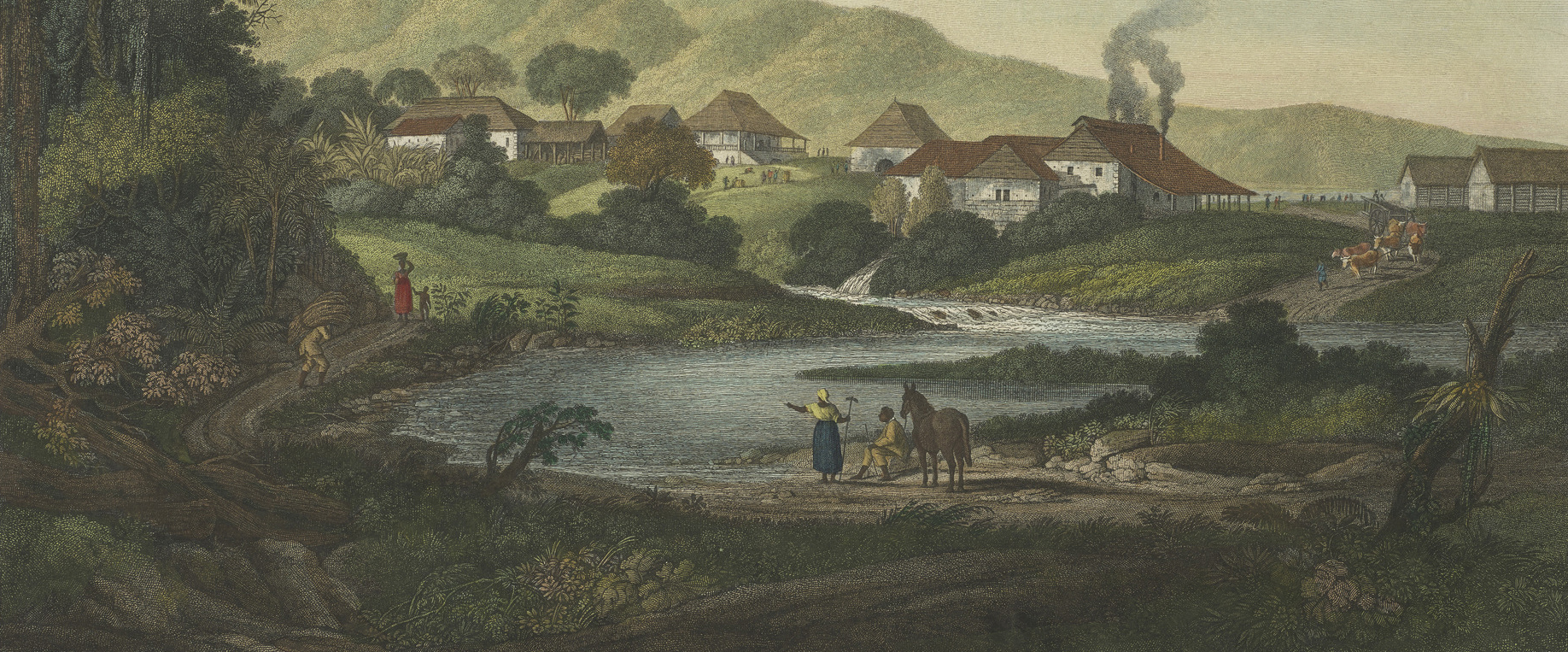The SCOS team has added three new curated themes to help researchers explore Scottish involvement in the West Indies and India as well as the collapse of The York Buildings Company in the early eighteenth century.
Scotland and the West Indies has been the subject of intense interest among historians in recent years. New work by scholars such as Stephen Mullen, Andrew Mackillop, Iain MacKinnon, and Finlay McKichan illuminates the complex relationship between Scotland and the Caribbean basin, showing how wealth produced on the backs of enslaved people in the latter injected financial capital in the former that enabled some Scots to acquire considerable amounts of land and achieve other economic successes at home. Scottish merchants plied the waters between the North Atlantic and the Caribbean Sea, trading goods and human property, while temporary migrants ventured to the West Indies to seek work or take up government positions before returning to Britain. The new curated theme, "West Indies," highlights cases that capture Scots active in this part of the Atlantic world.
Scots were also active participants in British India. In the mid-1760s, the British began consolidating their hold on India using the East India Company (EIC) as its proxy. Founded over a century and a half earlier, the EIC acquired the right to collect taxes on the Mughal emperors behalf in 1765, marking the formal beginnings of British rule on the subcontinent. Just as they did in British America, Scots sought out new opportunities in British India, including military service, corporate and government offices, and commerce. The cases listed under the curated theme, "India," capture the Scottish experience on the subcontinent and the ties that bound Scotland and India together.
Finally, in a theme that hits too close to home just over a decade after the global financial crisis and Great Recession, SCOS now offers a dedicated entry point to the rise and fall of the The York Buildings Company. Founded in the late seventeenth century in England as a water supply company, the corporation began speculating in land and insurance contracts in 1719 at the height of the South Sea Bubble. Parliament's attempts to reign in companies whose activities ventured beyond those mandated in their charters popped the bubble and sent The York Buildings Company's stock price into a tailspin. The company's near collapse forced it to liquidate its real estate assets, which included many forfeited Scottish estates confiscated by the crown following the 1715 Jacobite Uprising. Litigation over the company continued for nearly a century. Documents associated with "The York Buildings Company Cases" theme in SCOS show the human and financial cost of the company's ruin.
New cases will be added to these themes as they become available following initial metadata description. Please be sure to check back regularly for updates.

